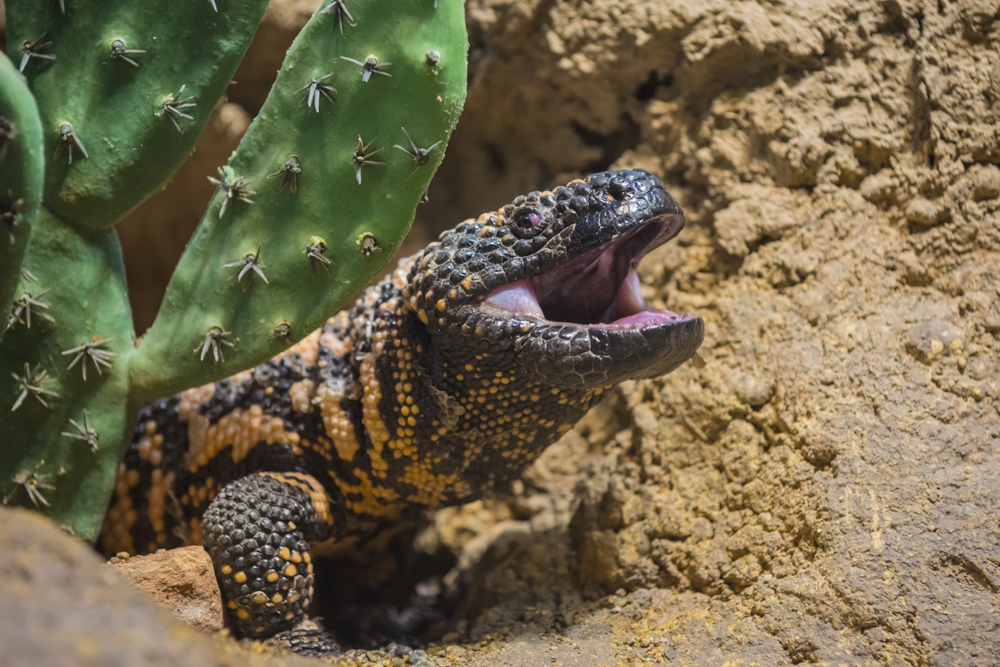The Gila monster (Heloderma suspectum) stands out as one of nature’s most fascinating reptiles, not just for its vibrant appearance but also for its unique biological and ecological traits. As one of the only two venomous lizards in the world, the Gila monster is an intriguing subject of study, offering insights into adaptation, survival, and the complexities of desert ecosystems.
Taxonomy and Distribution
Belonging to the Helodermatidae family, the Gila monster shares its lineage with the equally venomous Mexican beaded lizard (Heloderma horridum). The Gila monster’s name сщьуы from the Gila River Basin in the southwestern United States, a region where these lizards predominantly live. Their range extends across the arid landscapes of Arizona, parts of California, Nevada, Utah, and into northwestern Mexico.
Physical Characteristics
The Gila monster is easily recognizable by its striking appearance. Adults typically measure between 18 to 24 inches in length and can weigh up to 5 pounds. Their skin has in bead-like scales, called osteoderms, which create a rough, pebbly texture. These scales have bright color, with patterns of black and pink or orange that serve as a warning to potential predators about their venomous nature.

Venom and Its Effects
Unlike many venomous creatures that inject venom through hollow fangs, Gila monsters have grooved teeth that allow venom to flow into the bite wound. The venom is a complex mix of proteins, some of which have significant medical potential. One of the most notable components is exendin-4, a protein that has been developed into a medication (exenatide) for the treatment of type 2 diabetes.
A Gila monster’s bite, while not typically fatal to humans, can be extremely painful and cause significant swelling, nausea, and other symptoms. The lizard’s venom works primarily as a defensive mechanism rather than for hunting, as its prey consists mainly of eggs, small mammals, birds, and insects, which it does not require venom to subdue.
Behavior and Ecology
Gila monsters are predominantly solitary and spend the majority of their lives in burrows or hidden under rocks, emerging primarily during the cooler parts of the day or after rainfall. They are slow movers and rely on their keen sense of smell to locate prey. Despite their slow pace, they are capable of bursts of speed when threatened.
Their reproductive cycle is another point of interest. Gila monsters mate in the spring, and females lay a clutch of eggs in the summer. The eggs incubate underground for about ten months before hatching, an unusually long period compared to many other reptiles. This extended incubation period is an adaptation to the harsh desert environment, ensuring the young emerge during more favorable conditions.
Conservation Status
The Gila monster is currently listed as Near Threatened on the IUCN Red List, primarily due to habitat destruction and illegal collection for the pet trade. Urban expansion, agriculture, and mining activities have all contributed to the loss of their natural habitat. Conservation efforts are focused on habitat preservation and legal protection to prevent their capture and trade.
Cultural Significance
In addition to their biological and ecological significance, Gila monsters hold a place in the cultural history of the indigenous peoples of the southwestern United States. They are often featured in folklore and traditional medicine. Some Native American tribes regarded the Gila monster as a symbol of strength and healing, and its vibrant colors and elusive nature have inspired numerous myths and stories.
Research and Medical Applications
The venom of the Gila monster has opened new avenues for medical research. Beyond its application in diabetes treatment, scientists are exploring other potential uses, such as pain management and treatments for other metabolic disorders. This ongoing research highlights the importance of preserving these unique creatures, as they could hold the key to future medical breakthroughs.
Conclusion
The Gila monster is a remarkable example of nature’s adaptability and resilience. Its distinctive appearance, venomous bite, and secretive lifestyle make it a subject of endless fascination for herpetologists and nature enthusiasts alike. As we continue to uncover more about its biology and potential medical benefits, it becomes increasingly clear that the Gila monster is not only a marvel of the desert but also a valuable asset to scientific research and biodiversity. Conservation efforts are crucial to ensure that this unique species continues to thrive in its natural habitat, contributing to the rich tapestry of life in the southwestern United States and beyond.









